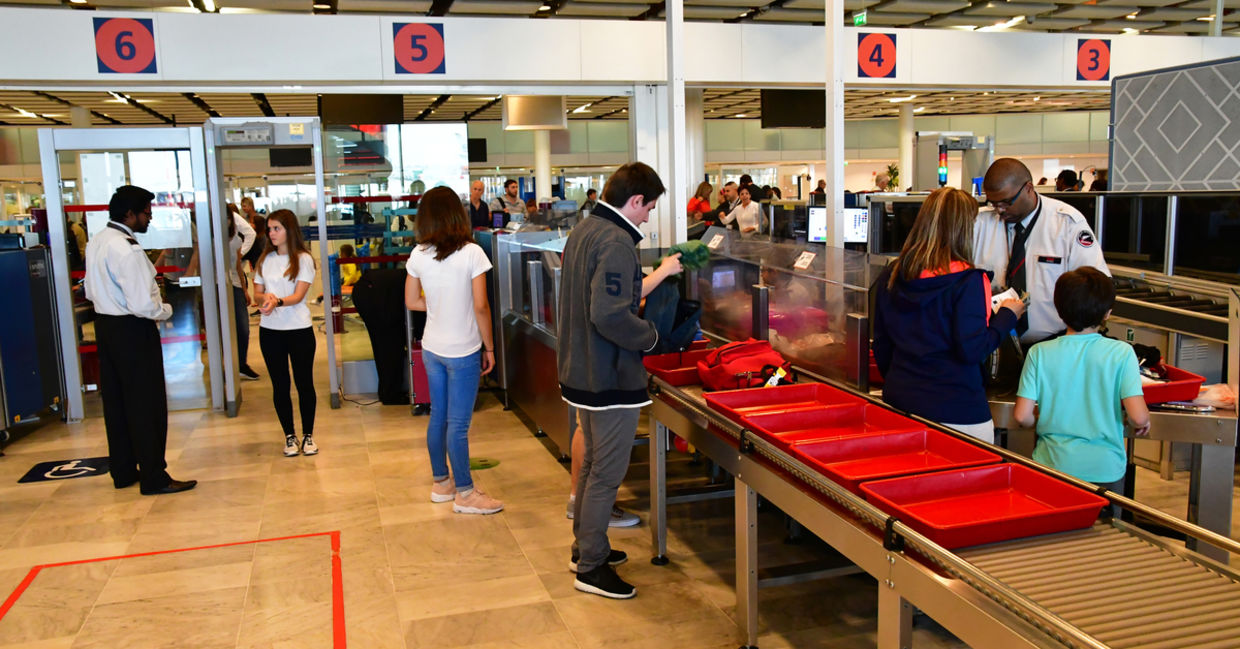
(Pack-Shot / Shutterstock.com)
Flying is more popular now than ever. It's becoming quicker and easier to fly. You can book your tickets online, choose your seats and on some airlines, even pick out your meals ahead of time.
Going to the airport extra early for screenings is often thought of as a nuisance, but they have made air travel extremely safe. In the post 9/11 world It is extremely rare to hear of a plane being hijacked or explosives being brought onboard. So, rest easy.
Or not.The growth in air travel popularity comes with a new threat that you probably haven't thought of. Germs and bacteria can travel unto airplanes and spread too. While countries don't want to admit someone who is clearly ill, the tools to detect sick people at airports is still pretty basic.
Unfortunately health questionnaires can be fudged. People can take fever reducers so they don't appear ill for infrared sensors, and some people don't show symptoms or may not know they are sick but are already infected with the flu or something worse. According to the World Health Organization, the risk of a global epidemic is increasing.
That's why Dr. Dirk Kuhlmeir and his colleagues at the Fraunhofer Institute for Cell Immunology and Therapy in Leipzig Germany decided to invent a cheap, reliable, and instant diagnostic tool to detect infections in passengers before they get on the plane.
The invention is part of a project called HyFly and uses an Ion mobility spectrometry (IMS) technology that is already used in other screenings. IMS measures an ions (electrically charged molecule) mobility and can identify individual compounds. itIMS is used to detect minute traces of drugs and explosives by taking swabs of luggage or clothing.
“Molecular biological methods aren’t suitable here, as they are too time-consuming. Instead, we will rely on IMS, a non-invasive method that doesn’t require, for instance, any smears, or any blood or saliva samples. This method has proven successful in detecting drugs and explosive residues at airports around the globe for many years now,” said Kuhlmeier in a press release from Fraunhofer.
The team is working on developing a system that will distinguish different bacteria from one another in a matter of minutes based on volatile organic compounds (VOC), which are components of human breath. This technology is currently being used to screen patients for lung cancer.
“IMS is notable for the possibility it offers to quickly and sensitively detect volatile organic compounds directly in the air,” said Kuhlmeier.
The research team's initial tests have indicated that this technology can be expanded for detecting signs of respiratory or bacterial infections and can also determine if a bacteria has become drug resistant. This is really important when you identify diseases like tuberculosis.
Now the device has to become optimized. Healthy people can also exhale organic compounds, especially if they have been eating spicy foods according to the press release. To overcome this, the team is utilizing a gas chromatography to split up compounds so that they are easier to analyze.
The researchers are also working on a way to detect viruses, like Influenza (flu) and SARS which can be spread in airline cabins.
The next step is to test the machine, which has a disposable mouthpiece with volunteers at clinics who have already been diagnosed with having bacterial or viral infections according to The Economist. The volunteers will also provide information about what they have eaten so that the influence of various foods can be studied. Preclinical studies are scheduled for later in 2019 in the new Fraunhofer Project Hub for Microelectronic and Optical Systems for Biomedicine.
Actual airport trials will not begin until the other trials are completed and all the bugs are worked out. If the HyFly machine proves to be effective, the researchers believe that it could also become a valuable diagnostic tool for hospitals and other medical facilities to use for rapid analysis of infectious diseases.
Disease screening may soon become a routine part of air travel that could make the friendly skies much safer too.
YOU MAY ALSO LIKE
Dogs Can Detect Lung Cancer With 97% Accuracy in New Study
This 10-Minute Test Can Detect Cancer Anywhere in your Body
Researchers Built the First Noninvasive Mind-Controlled Robotic Arm







